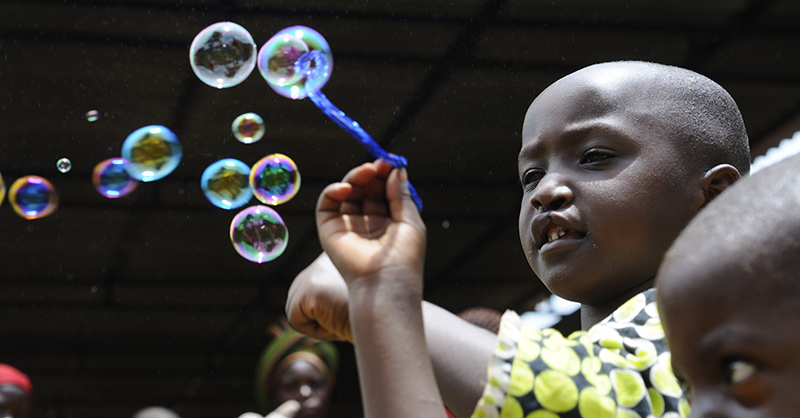“Overall, having a cleft lip and palate has been a good thing for me. It has helped me realize at an early age that everything in life isn’t that easy but that if you’re positive and have a loving family, everything will be fine,” says Peyton Hutchins when describing her experience living with a cleft lip and palate. Peyton’s story is one of many shared by Johns Hopkins Children’s Center.
Though craniofacial defects are one of the most common birth defects, not all patients are children. Some need care later in life after experiencing trauma such as burns, accidents, animal attacks or oral/head/neck and skin diseases.
The causes of cleft conditions are largely unknown, but hereditary factors haven’t been ruled out yet. Statistics show that about 1/3 of those born with a cleft palate or lip may have a relative with a craniofacial condition, which is why providers and researchers continue to work together to gather as much information as possible.
Bringing Awareness to These Conditions
Awareness about cleft and craniofacial conditions is promoted throughout July’s National Cleft & Craniofacial Awareness & Prevention Month. The CDC collects information from only 14 states in regards to craniofacial birth defects, which is one of the reasons that promoting awareness of these conditions is so important.
National Cleft & Craniofacial Awareness & Prevention Month was established by AmeriFace and cleftAdvocate, and includes many NCCAPM organizations. Here are some of these organizations’ suggestions for participating:
- Go social. Share articles and stories using #cleftawareness and add Facebook frames, “Twibbons” and the like to your profiles for the month of July.
- Get active locally. Your local and state government may be inspired to share proclamations and your local newspaper might be interested in featuring a human interest story about a patient with a facial difference. The only way to know if they are? Ask!
- Give if you can. There are several easy (and fun!) ways to bring awareness and raise some money. A few options include hosting lunch & learns where people donate, dine and learn about these conditions. You could also try coordinating a dress-down day where your office has a casual dress code day for those who donate a small amount of money or hosting another local fundraising event.
Health Care Professionals That Make a Difference for These Patients
There are several providers who work with pediatric or trauma patients. For instance, genetic counselors can play a large part in working with these patients and their families. These counselors specialize in helping families identify risks, investigate medical histories and interpret information. Genetic counselors can specialize in several areas, including pediatrics, an area that can have a large part in treating patients born with a cleft palate or cleft lip.
Nurse researchers design and conduct studies, which can lead to breakthrough surgical procedures and higher standards of care. Pediatric nurses are a huge asset when working with small children. They help guide parents through treatments and they reassure and comfort their young patients.
Other providers, like pediatric dentists and ophthalmologists, may be involved in the recovery aspect of surgery, or in the development and implementation of the treatment plan. Pediatric dentists differ from general dentists in two ways:
- They focus their studies on the oral health and needs of younger people.
- They have an additional educational requirement of two years.
Cleft and craniofacial conditions can affect the number, size, shape and position of both baby and adult teeth, usually the teeth located closest to the cleft. There may be some additional restorative care for patients with a cleft, and a pediatric dentist may be more aware of what to look for due to their specialized training.
Some of the same reasons pediatric patients may want to see a pediatric dentist can be applied to their eye care as well. Pediatric ophthalmologists, like their dental counterparts, go through an additional period of training to specialize in pediatrics. Sometimes surgery is required when the craniofacial malformations affect the eye, and this is one of the ways an ophthalmologist becomes a vital part of the team. The American Association for Pediatric Ophthalmology and Strabismus is a great source for more information about pediatric ophthalmology.
Together, physicians, nurses, families and researchers can help provide education and awareness about cleft and craniofacial conditions to families, but they’re not the only ones who can make a difference. Pitch in today by driving awareness of the cause during National Cleft & Craniofacial Awareness & Prevention Month.


